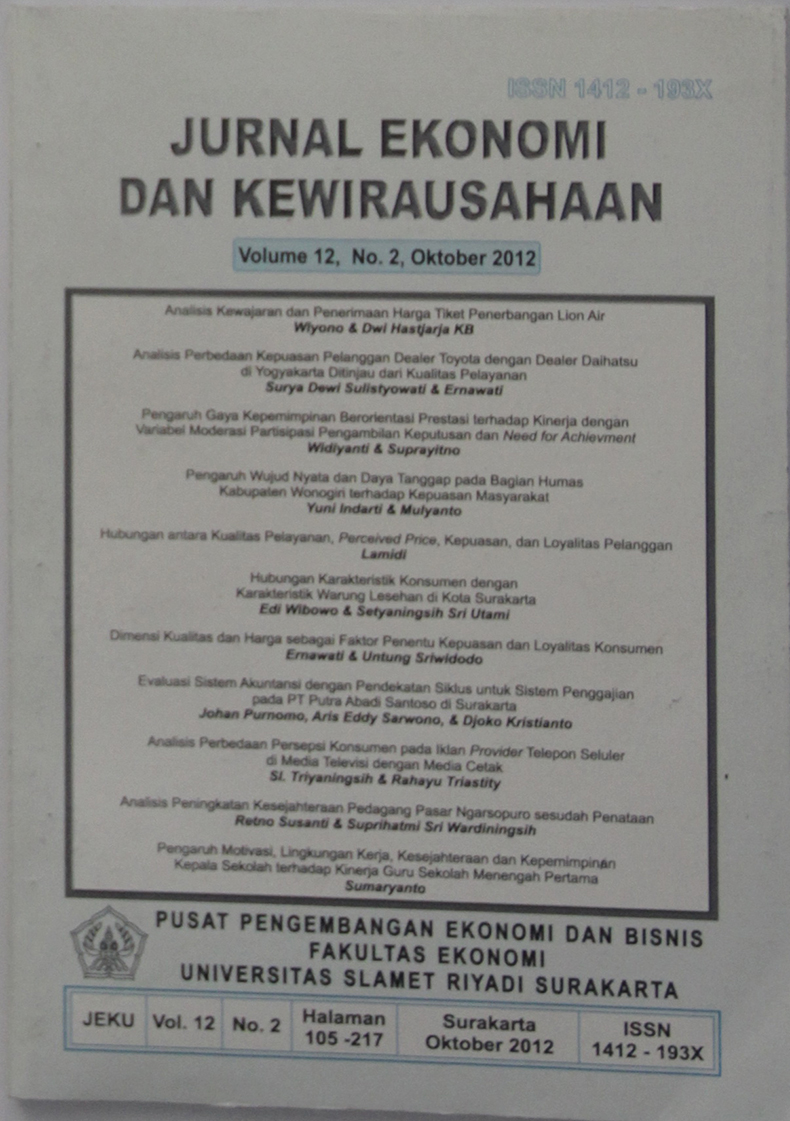DIMENSI KUALITAS DAN HARGA SEBAGAI FAKTOR PENENTU KEPUASAN DAN LOYALITAS KONSUMEN
Abstract
ABSTRACT
The relatively service-driven restaurant industry is becoming more important in generating income for many countries and hence the service performance of the restaurants must be well understood and managed. The key determinants for restaurant service quality need to be identified, especially for the important segment such as youth consumers. Therefore, this study aims to explore the importance of physical environment quality, human service, food quality and price from the youth consumer’s perspective. This study using 100 youth consumers in Waroeng "SS" Surakarta taken with snowball and convenience sampling techniques. Testing hypotheses formed by 3 regression model aims to analyze the key determinants of youth satisfaction and youth loyalty, and examined the effect of satisfaction to youth loyalty. Results of this study show that physical environment quality, human service, food quality, and price were all significant effect to youth satisfaction and youth loyalty, further satisfaction was significant effect to youth loyalty. Finally, the key determinants on youth satisfaction was mainly physical environment quality, while the key determinants on youth loyalty was mainly price.
Keywords: physical environment quality, human service, food quality, price, youth satisfaction, youth loyalty
Downloads
Published
Issue
Section
License
Authors who publish this journal agree to the following terms:
- Authors retain copyright and grant the journal right of first publication with the work simultaneously licensed under a Creative Commons Attribution License that allows others to share the work with an acknowledgement of the work's authorship and initial publication in this journal.
- Authors can separately make additional contractual arrangements for non-exclusive distribution published by the journal (e.g., publish it in a book), with an acknowledgement of its initial publication in this journal.
- Authors are allowed and encouraged to send their work via online (e.g., in the institutional repositories or their website) after published by the journal.









